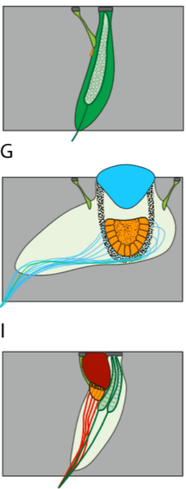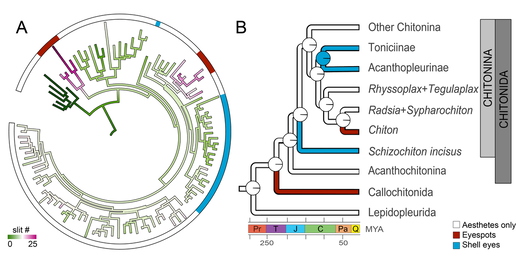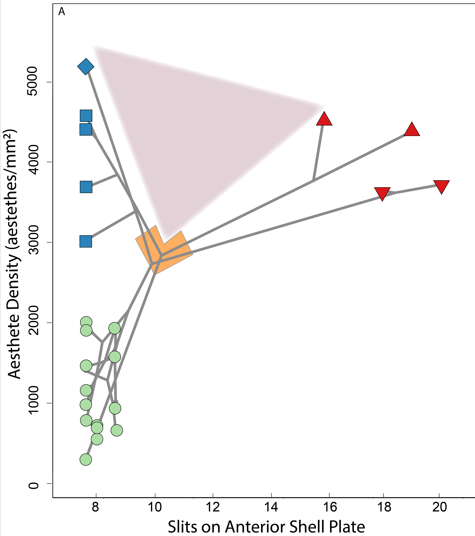We investigated the morphology of both types of eyes, and found a difference in the shells on the chitons' backs. Shell eyes and eyespots are embedded in the upper layer of chiton shells, so the optic nerves have to travel to an edge where they pass through openings (slits) to get down to the rest of the chiton's body and join the big nerve cords. We found that chitons with eyespots have way more openings than chitons with shell eyes, or with no eyes. Why? Well, you need hundreds of shell eyes but THOUSANDS of eyespots, so we think that more openings work kind of like a cable organizer at the back of your desk, helping keep all those optic nerves straight. Because eyespots work together, chitons can't let them get all tangled up without losing 'sight' of which eye is where!
0 Comments
Leave a Reply. |



 RSS Feed
RSS Feed